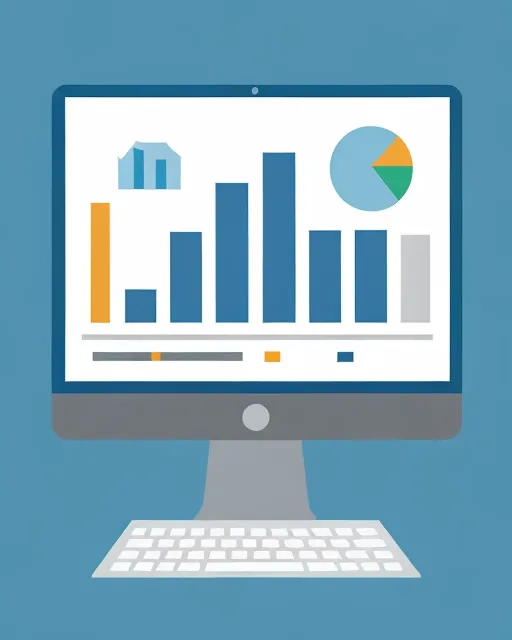For many new gym owners, operations regarding marketing campaigns and advertising programs may rely heavily on gut instincts and passive data points from Meta on a boosted post or ad. Unfortunately, leaning on this type of marketing can be a gamble. However, we are here to offer a reasonably easy-to-implement system for optimizing your gym’s marketing performance through data analytics.
Before we dive in, let’s quickly define what data analytics is. Simply put, data analytics is the process of reviewing raw data points from various sources and building conclusions based on how they interacted or performed. What does this mean for gyms looking to work with their data? Optimizing your gym’s marketing with data analytics requires knowing where to find your numbers, what they mean, benchmarks or some standard, and the ability to draw conclusions.
Understanding and Setting Gym KPIs
Before you optimize your marketing performance based on your data analytics, you must understand what you are measuring – and why. Knowing your gym’s business growth goals before you get into optimization is critical. With the end goals in mind, you can see how to leverage each of your marketing channels best to achieve these goals. Breaking down each channel as part of your strategic growth initiatives, you can begin to set key performance indicators (KPIs) for each medium. You should set these KPIs to show they are accomplishing their part in the larger picture of your gym’s sales funnel.
Monitoring your gym’s KPIs requires understanding campaign success looks different at varying stages of the funnel. For instance, a top-of-the-funnel KPI for an Instagram advertisement could include total impressions, likes, or increased followers. Middle-of-the-funnel KPI success examples include subscribing to email newsletters, downloading a piece of content from your website, or asking questions via social media, messages, or website forms. Later funnel stage KPIs will include more conversion-based activity like scheduling a consultation, booking a free trial, or even signing up for a membership.
Collecting and Analyzing Data
Beginning the optimization process first requires data to understand where you can improve. There are a few ways to do this that are not mutually exclusive: industry averages and historical data comparisons. We refer to this information as the baseline data. As you run new campaigns, push out new content, and drive people to your website, you must ensure your gym can collect information from people.
Many times, the digital channels you are utilizing have the ability to track metrics from users to a degree. For instance, social media channels tend to have basic post metrics, advertising platforms like Meta or Google give you insights into the data, and websites can have site-usage tracking built in through programs like Google Analytics (G4).
Once you have captured your data and made it available for analysis, you can compare it to your baseline data. Whether you are going against industry standards or your prior results, looking at your results through the lens of your gym’s business goals and the KPIs needed from the specific source is critical. This comparison and proper understanding of success becomes monumental for long-term victory, especially as your business grows.
Optimizing Marketing Performance with Data Analytics for Gyms
As time passes and multiple data points are collected, you can begin to analyze them more with a fine-tuning mindset. Review data sets from various campaigns, audiences, and tests to optimize your gym’s marketing campaign performance to find where, why, and how specific initiatives worked (or didn’t). Additional tests to verify elements of success can be a helpful tactic to eliminate variables that could be holding your marketing efforts back from further success.
Because marketing channels carry nuances within their audiences, explicitly honing your gym’s messaging and data analysis for each medium is necessary. Just because you may be trying to reach the same target audience in terms of demographics and interests, to best reach them successfully, you must use additional message crafting, visuals, and even call-to-actions based on where or how you are reaching them. Verification for success can be done with simple A/B testing or other similar types of validation you find reliable.
Continual Monitoring, Testing, and Building
The work is not necessarily done once your campaigns are up, running, and optimized. While ads and campaigns can be optimized, there is not a finish line. This is because messaging can become stale, trends can shift, and values can change. With this in mind, keeping tabs on your data and tracking any downward trends is beneficial for long-term success.
Early indicators of change in audience interest or market movements are constructive for continual growth. Looking towards the future to monitor for shifts, test new methods or messages, and focus on building new or more effective resources is required to achieve this persistent gym development. As you shift toward new message types, data capture, review, testing, and optimizing becomes a cyclical process to optimize conversions and return on investment (ROI) for your fitness business.
Making A Splash
Whether you run a newly opened gym or operate a fitness facility that has been around for a while, optimizing your gym’s marketing performance with data analytics is critical for maximizing conversions and ROI. Ensure that you capture data points within your gym’s marketing campaigns, leverage the pieces for your sales funnel, test your elements, and continually improve based on your results. Dive into our Marketing section for more information regarding this topic. If you still want more, check out the free online course titled Business Analytics: Learn How to Create a Business Analytics Strategy at HubSpot Academy.



